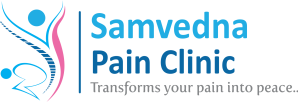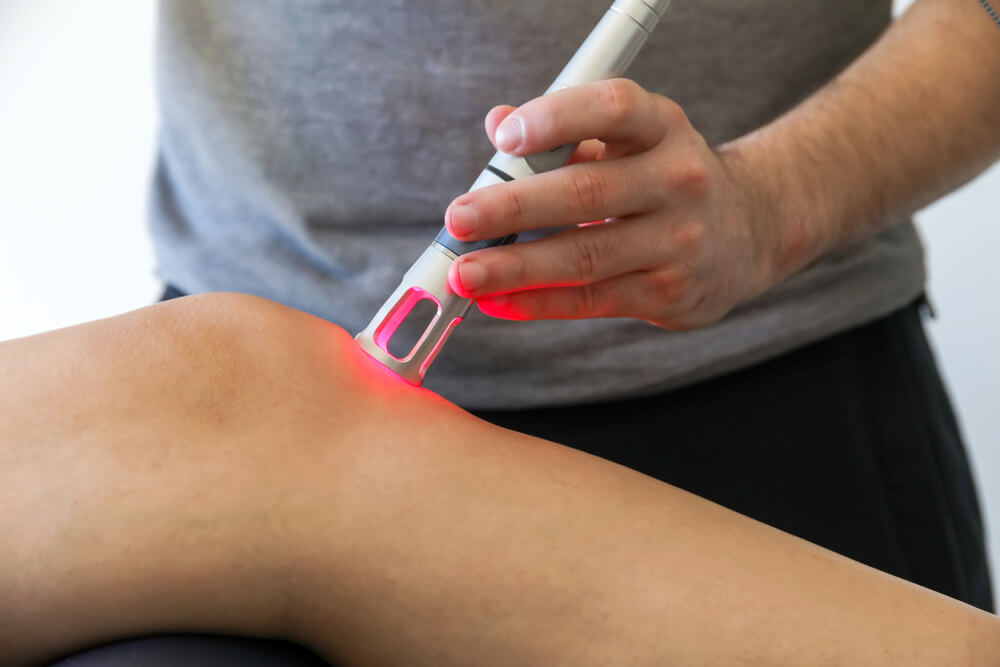
Low Level Laser Therapy
LASER is an acronym which stands for Light Amplification by the Stimulated Emission of Radiation. Low level laser therapy (LLLT) utilizes a pencil-like beam of electromagnetic waves of a single frequency and defined wavelength to promote tissue healing and pain relief in a broad spectrum of soft tissue injuries and diseases. LLLT is a non-invasive light source treatment that emits no heat, sound, or vibration. It is also called as Cold Laser Therapy, Photobiomodulation, or Soft Laser biostimulation. LLLT is believed to affect the function of connective tissue cells (fibroblasts), accelerate connective tissue repair and act as an anti-inflammatory agent.
Wavelengths between 660 nm and 905 nm have the ability to penetrate skin, and soft/hard tissues. This light has a good effect on pain, inflammation and tissue repair, so they are used in the treatment of musculoskeletal disorders and many other conditions.
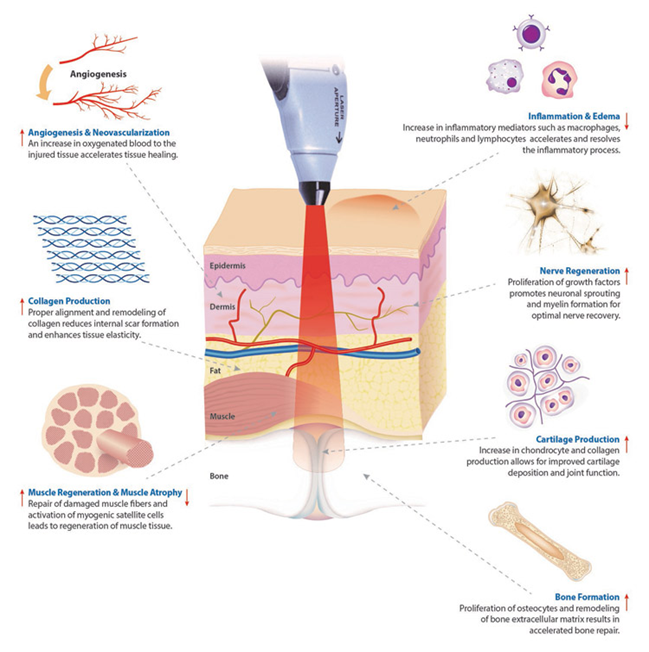
Mechanism Of Action
In simple words, Laser light stimulates weak/injured cells. Those cells start functioning optimally and by doing so the affected part get repaired gradually. The molecular and cellular mechanisms of LLLT suggest that photons(light particles) are absorbed by the mitochondria(cell’s power house) of weak/injured cells. They stimulate more ATPs(energy substance) production and low levels of ROS(toxins), which then activates transcription factors(Genetic coding), such as NF-κB, to induce many gene transcript products responsible for the beneficial effects of LLLT. This results in improved circulation, reduced inflammations, reduction in pain and acceleration of healing process. The end result is restoration of normal functions of cell unit
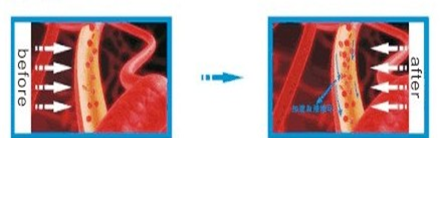
Therapy Advantages
1. Improving the blood circulation Laser directly irradiates on blood vessels and blood flow increases. It also irradiates the sympathetic ganglion which dominates this range, resulting dilatation of local blood vessels. By these ways it supply sufficient blood and nutrition in order to improve the metabolism and relieve symptom.
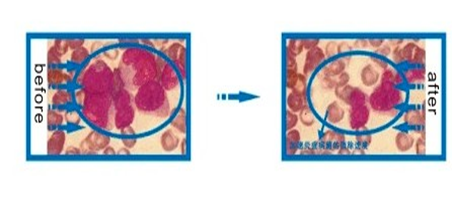
2. Diminishing the inflammation quickly
Laser irradiates the lesion area to enhance the activity of phagocyte (which removes dead and harmful cells) and improve the immunity and diminish the inflammation quickly.
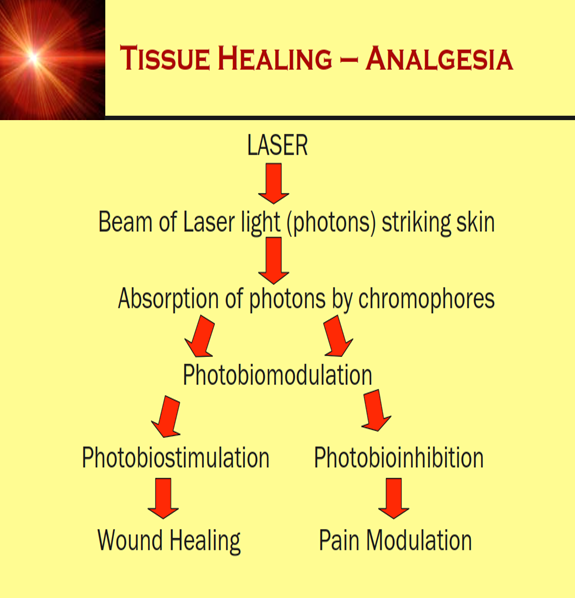
Indication
Some common conditions treated by LLLT are
FAQS
ANS: If it is used in proper dose and duration for correct indications, then up to 80% of the patients can notice benefits by LLLT gradually in their problem
